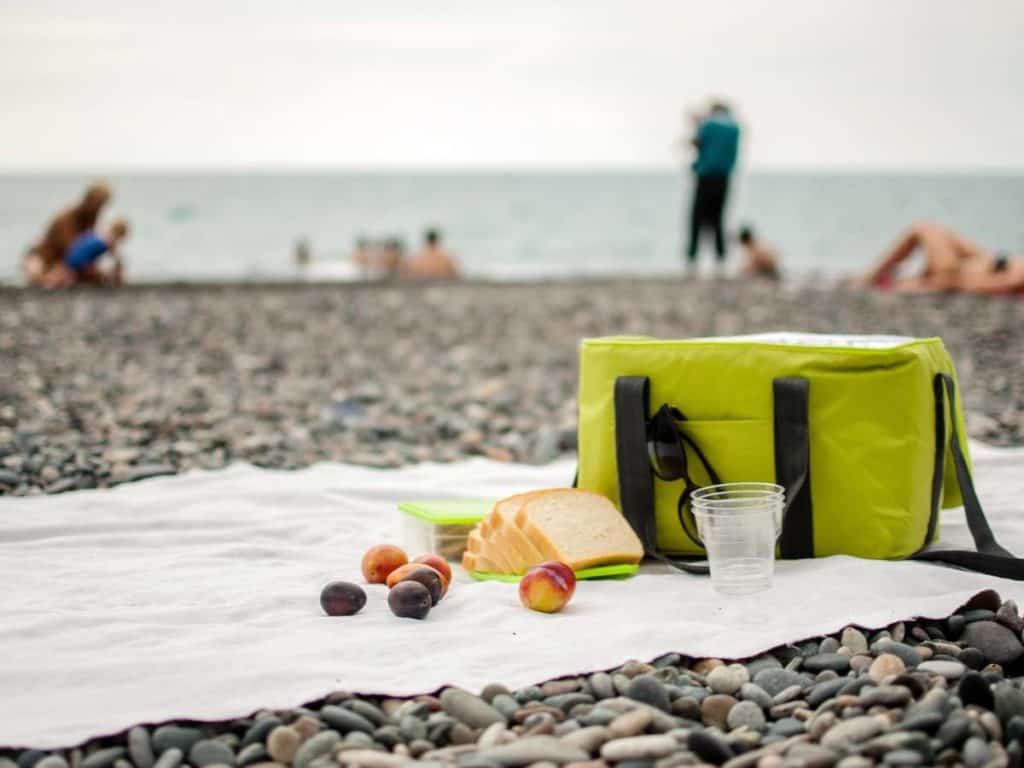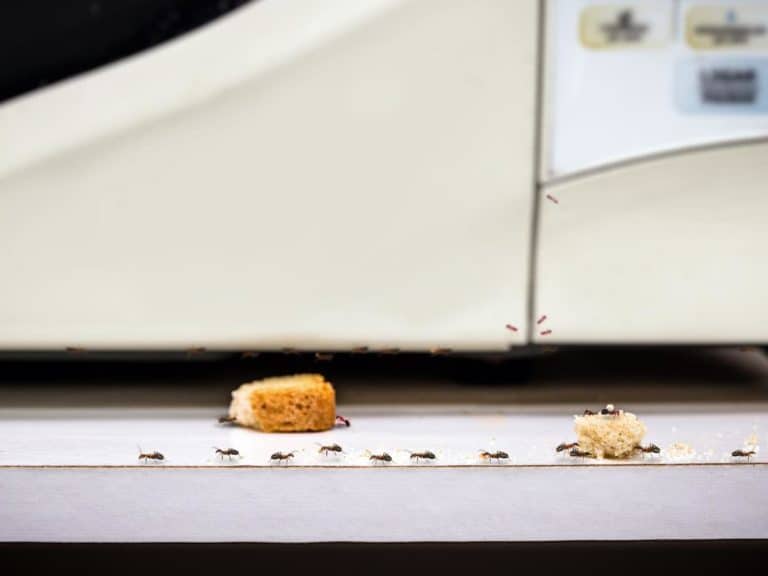How To Keep Food Cold For A Week When Camping (With Or Without Coolers)
Keeping the food cold when you are camping is crucial, especially if you don’t own a portable fridge. Hence, your meal planning for the trip needs to be taken into consideration. If you bring along many food items that need to be kept cold, you need to think of ways on how to keep food cold for a week camping. Here is a great tip:
To keep food cold, bringing along a cooler box should be always at the top of your priority. You can place here all your pre-frozen meals so that they last long. Also, make sure to pack as many ice packs as you can fit around the food so that it remains cold.
Furthermore, not storing food at the right temperature can lead to food poisoning, and you don’t want that to happen on your trip, right? Well, here are some tips that can help you to keep food cold and well-preserved.

10 Helpful Tips To Keep Food Cold While Camping
Here are some of the best tips on how to keep food cold while camping:
Prepare the meals in advance
Preparing the meals in advance helps in ensuring the food is kept for longer. With that being said, ensure that the food is properly heated before eating. Frozen meals should also be placed at the bottom. Keep in mind that perishable food should be eaten early on the camping trip to prevent unnecessary food wastage.
Avoid the sun
Sun and ice can never work together.
Make sure that your things are placed under shade during the camping trip to avoid any direct contact with the light. Some campers usually leave their things in the car until the party begins, especially during summer when the temperature is high.
On the other hand, during colder seasons, you will have to worry less as your cooler might end up retaining more coldness. Be mindful not to keep it closer to any parts of your car.
Do not prepare perishable foods
Packing perishable meals during camping trips can turn out to be worth the risk.
You can choose other sources to get protein without necessarily depending on fresh meat and dairy. It is because fresh meat and dairy can go bad quickly if not stored in the fridge. If meat is part of your daily diet, you can always rely upon beef jerky or some summer sausages for the protein source.
Also, try to avoid packing any soft cheese like brie or mozzarella, instead bring firm, aged cheese like cheddar or Gouda. If you decide to go with firm cheeses or dried meats, do not forget to consume lots of water because they are pretty high in sodium.
Do not forget backups
When preparing for a camping trip, this yip should be at the back of your mind. To begin with, always bring along some non-perishable snacks and gallons of water for emergency purposes. Some of the snacks you can bring include, trail mix, protein bar, homemade energy balls, and tinned foods.
Use frozen bottles of water
Though it may be tempting to grab ice from the gas station on our way to your camping destination, a bag of ice will melt quickly and can contaminate the food.
You may use frozen bottles of water, instead. They stay cold much longer and are more effective at keeping the food chilled. Moreover, you’ll have plenty of water to drink once the bottles melt.
Double wrap frozen meat
If you still insist on bringing meat, make sure you know how to pack it.
To help prevent cross-contamination, double wrap the frozen meat in aluminum foil and freezer bags. It will prevent any liquids from escaping into the food container once the meat thaws.
For safety reasons, the interior of the cooler must not exceed 40 degrees Fahrenheit. You may use a hanging thermometer to keep an eye on the temperature.
Do not use party ice
Do not use the party ice they sold at service stations and supermarkets.
It is an easy option because of its accessibility, but they melt too quickly, which makes them inconvenient. Use it only as a last-minute top-up, if you need to extend the life of your food for a week.
Invest in the right cooler
To keep your food cold and last for a week, do not buy a cheap cooler.
No amount of ice can keep the food chilled during the trip, but the right cooler can help you do this. There are many types of cooler on the market, ranging from cheap styrofoam to high-end steel or fiberglass coolers.
Other types are electric that can be hooked up to car batteries. Expensive kinds of cooler include features like thermometers, shelves, wheels, handles, and drainage plugs.
Later on, you’ll get to know some of the best coolers for camping.
Don’t open the cooler too much
For obvious reasons, the cooler might find it hard to maintain its coolness due to the regular opening and closing of the cooler to get drinks.
Because of this, the cold air is lost while at the same time the warm air gets in. it can lead to the melting of the ice, so be careful not to open the cooler unnecessarily.
Therefore, having two coolers can help ensure that the food cooler is used only when necessary. You can designate one cooler for drinks and the other one for food. It can save the cooler being opened all the time to get drinks out, especially for children who always want to drink.
Don’t drain the cooler unnecessarily
Even after the ice melts in the cooler, the cold water continues to keep the food cold.
As long as you have space, do not drain the water from the cooler.
Add rock salt
Well, this is the secret trick that is well-known among campers.
Adding salt can lessen the water’s melting point. When melting water mixes with rock salt, the water becomes colder than the ice. In this case, your food and beverages also retain coldness.
But as the saying goes, “Too much of something is dangerous”, so do not add too much salt. This can alter the taste of the food or beer.
What To Look For In A Cooler?
If you are camping, the ideal cooler is different from what you’ll need for a week-long fish trip. That’s why here are some factor to consider when selecting a cooler:
Size
The first thing to consider when looking in for a cooler is the size.
For those who go on a week-long camping trip, you can choose the 100-quart size, instead of the 25-quart ice chest. However, a too large cooler can have negative effects on the ability to hold ice, especially if you are not filling the entire space.
Minimizing the empty airspace can keep the ice and cooler contents colder for longer, so you want to think first how much you have to keep cold, then choose the best size that will suit your needs.
Material and design
There are four types of coolers: plastic, fabric, metal, and styrofoam.
If you look at the cooler as an investment, you can cross out the styrofoam list. Fabric coolers are made from a canvas-type synthetic material that is insulated with flexible foam. Meanwhile, metal and plastic coolers are easily the most durable with plastic coolers being today’s most popular choice.
Metal coolers are heavy, more expensive, and well-insulated. While the needs certainly determine the cooler, you can opt for a plastic cooler.
Construction
Before you buy a cooler, inspect its exterior carefully.
If the cooler seems hollow or not well-insulated, do not buy it. The more insulated, the longer it will keep the ice. You may also inspect closely the cooler lid by tapping on it, then opening and closing it to ensure that it is well-insulated. Make sure to look for a lid with metal hinges, because it is a tell-tale sign of a solidly constructed cooler.
Portability
In a nutshell, a cooler filled with ice looks like a mobile refrigerator; therefore, portability is a big factor when deciding on a cooler.
While smaller and lighter coolers are portable, you should not sacrifice the cooler’s heft – that is generally responsible for better circulation and keeping the ice longer.
Many manufacturers take note that large coolers don’t have to be heavy. Many large coolers come with wheels and handles that can enhance their transportability.
Durability
If you are going to invest in a good cooler, make sure that it is up to the task.
Some heavy-duty coolers are advertised as tough and durable. Also, remember not to let those attractive metal coolers cast a spell on you.
One major downside of metal coolers is they are not as durable as plastic coolers. Though they give the appearance of sturdiness, they will dent easily if impacted. Meanwhile, plastic coolers better absorb any bumps and hits they encounter.
Best Coolers for Camping
Here is a rundown of the best coolers for camping:
YETI Tundra 65 Cooler

Material: Polyester
Yeti is one of the most popular brands of coolers.
The Tundra cooler can keep its contents at safe temperatures for consumption and refreshing temperatures for drinking. It has a simple, rotomolded design that works efficiently. It features the bear-resistance rating from the Interagency Grizzly Bear Committee (IGBC) that has sturdy latches making it easy to use and durable.
This cooler has a removable dry basket inside the top to keep sensitive items above the ice and can carry loads of accessories for all kinds of stuff.
The Tundra has a reasonable weight for its size and a shape that has a low profile, making it good for camping. Even after regular use, this cooler works just as well as if it’s the first time you bought it. Yeti is available in different colors and designs, providing more choices to match your style better.
What I Liked:
- Excellent insulation
- Unbeatable durability
- Easy to use
- Bear Proof construction
What I Didn’t Like:
- Quite expensive
- Heavy
Coleman Xtreme 5 Cooler

Material: Hard-sided plastic
Coleman is just like car camping that offers a wide range of products at a reasonable price.
If you are tight on budget, you can opt for their 70-quart Xtreme 5 model and you get a generous amount of interior space. The Coleman comes with a Have-a-Seat lid that supports up to 250 pounds of weight and four handy cup holders on top. This inexpensive cooler can outperform Styrofoam and other cheaper models.
But these coolers are decently durable and come in a wide range of capacities from 50 up to 150 quarts (and even the largest options still are reasonably priced).
However, there are some things to note when buying cheap items, and Coleman’s biggest con is its inability to keep ice frozen for long. Ice retention does not last long. It is recommended to pre-chilling the cooler before loading it up and keeping it in the shade to help maximize performance.
But considering the Coleman features rotomolded options at $150-$250, it is hard not to purchase this item. In other words, this cooler is suitable for casual outings and shorter ones.
What I Liked:
- It is budget-friendly
- Double down as extra seating
- Generously sized
What I Didn’t Like:
- It has poor ice retention
Orca ORCP040 Cooler

Material: Hard-sided rotomolded
ORCA (Outdoor Recreation Company of America) is a Tennessee brand that has gained popularity from the dedicated following outdoors people.
This 40-quart hard-sided cooler offers other premium models the best value for their money. It features flexible side handles, making carrying stuff a breeze. It has an exterior organized pocket for storing minor items like bottle openers and keys.
The sizes start at 20 quarts and go to 140, there’s an ORCA cooler available that will suit your needs.
Many significant features make this cooler a great option. To start with, the Otter Box above gets the best feature for ice retention. However, the ORCA’s traditional rubber T-handle is a bit stiff and tougher to latch than the Tundra’s T-handle, which is easier to use.
This cooler is way cheaper than the Yeti Tundra’s cooler, my top pick, so you can save a few bucks for a good quality cooler. Furthermore, the ORCA coolers are not widely available online or sold in many stores like Yeti. But if you can find one, the ORCA is a solid all-rounder.
What I Liked:
- Fair pricing
- Great capacity
- It comes in a wide selection of sizes
What I Didn’t Like:
- Stiff T-handle latch
Rovr Rollr 60 Cooler

Material: Hard-sided plastic
The RovR RollR 60 is a wheeled cooler that rolls over terrain effectively. It is the best Wheeled Cooler.
This cooler has found solutions to many people’s desire for a wheeled cooler, having the most useful features and accessories on the market.
With tires, just like any bicycle or car, the Rovr can be moved with ease. It is equipped with a gigantic, easily attachable dry box to carry anything you don’t want in the cooler such as camping chairs, hamburger bans, and tents.
Furthermore, it has an additional extension accessory. This cooler is great to be attached to the back of your bicycle for easy transport. Though this super handy cooler is easy to use, the insulation is likely fair enough for many, but may not be the best. But every time you needed a cooler on the go, this cooler is the perfect fit.
What I Liked:
- Ease of moving
- Very creative design
- Wide space
What I Didn’t Like:
- Poor ice retention
Food Safety Tips For Camping
No one wants to get sick or have an upset stomach during their camping trip; therefore, it’s a good idea to keep these common food safety tips in mind:
- Always store uncooked meat and poultry separate from other food items to lessen the risk of cross-contamination.
- You can prevent the spread of bacteria by “keeping hot foods hot and cold foods cold.” Perishable foods should be eaten or discarded within two hours when unrefrigerated.
- If you are going to bring raw beef, pork, and lamb for your trip, it should be cooked to at least an internal temperature of 145°F while raw poultry should be cooked to an internal temperature of 165°F.
- Do not forget to bring garbage bags to dispose of any leftover food and other trash.
- Bring bottled water or boil your water to ensure you are drinking safe water.
- Before using, wash your eating utensils with clean water and soap. Bring disposable wipes and hand sanitizer to keep your hands clean at all times. Do not forget to wash your hands after handling raw meat and poultry.
Takeaway
Nothing can beat the experience you get when going on a camping trip with your loved ones, especially if you are not worrying about the food or beverages going to spoil. Keeping your food cold and in excellent condition during your trip will not only save the food but also avoid deadly scenarios such as food poisoning and an upset stomach.





